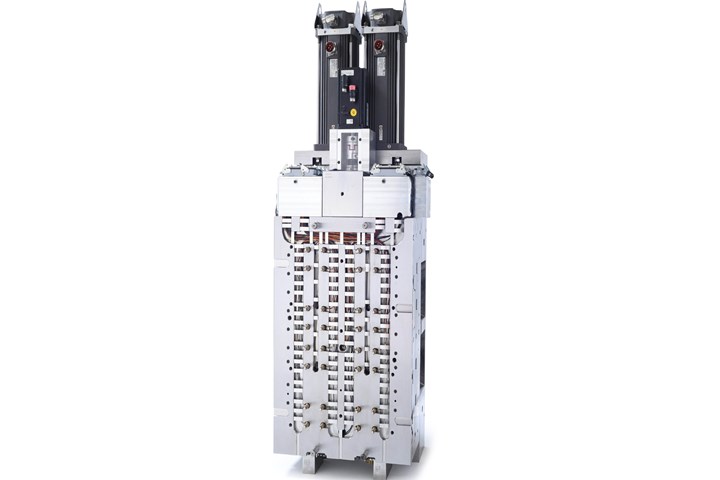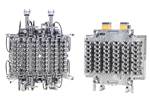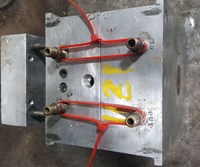Melt Delivery and Control System Enables Ultimate Design Freedom
Scalable to 128 cavities, Husky’s UltraShot Injection System offers the injection molding process unconstrained part design and risk-free scalability.

Photo Credit: Husky Injection Mold Systems
Husky Injection Molding Systems presents the UltraShot Injection System, a next-generation melt delivery and control system that is said to eliminate traditional injection molding process deficiencies and achieve risk-free scalability, improved capability and overall part design freedom.
UltraShot Injection System’s identical system behavior for each injection circuit provides process condition consistency with cavitation scaling. A predictable process from pilot to high cavitation—scalable to 128 cavities—enables producers to maximize cavitation without negative performance on balance or shot-to-shot variation. Accelerated prototype to high cavitation production qualification further increases speed-to-market.
According to Husky, the system economically produces unconstrained, highly functional and validated parts via its total cavity filling control and process optimization, which overcomes traditional constraints of pressure, L/T and difficult-to-mold resins. This enables part lightweighting and provides resin selection flexibility.
Further, compared to conventional hot runners, melt in the UltraShot Injection System is said to experience fewer high-pressure injection cycles, preserving the original resin properties, lowering mold-in stress and enhancing the molded part’s mechanical and optical properties.
Powered by the Altanium Mold Controller, Husky’s hot runner system also provides highly advanced process monitoring and control for injection molding. Altanium digital analysis offers repeatability and traceability for part dimension consistency, improved balance and a more stable process. It gives users full control and trend analysis of various processes resulting for lower risk operations.
Finally, the UltraShot Injection System offers unmatched OEE and increased productivity, at a reduced footprint, for the lowest total part production cost. This system is an ideal fit for medical, technical packaging and consumer electronic part producers looking to scale up, implement more efficient process control, address competitive marketplaces and reduce risk, scrap, waste and cost.
Related Content
-
PTXPO 2025: Mold Builders Showcase Innovation, Automation and Efficiency Across the Supply Chain
Mold manufacturers highlight advanced machining, automation, precision molding and validation technologies driving speed, quality and efficiency across tooling applications.
-
How to Supply Cooling to Additive Tooling
Additive tooling provides limitless options for cooling a mold’s difficult-to-cool areas.
-
Navigating Economic Resilience and Consumer Trends
Consumer behavior provides mold builders insight into the evolving market dynamics of goods and services that helps strategic planning.















